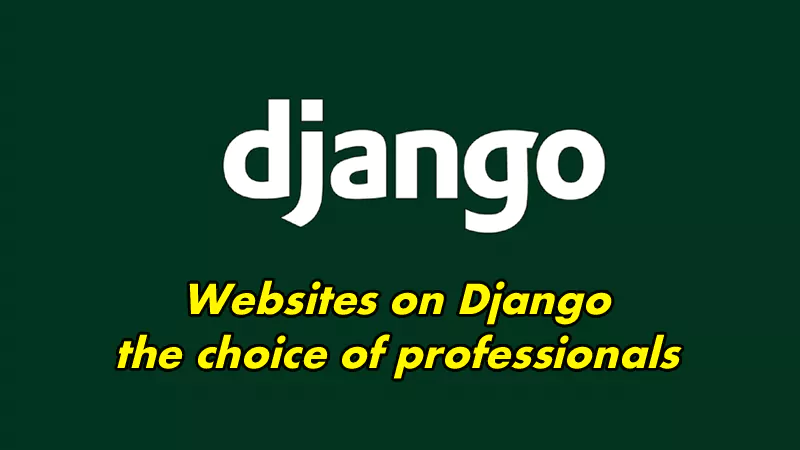Django is a free framework for developing fast, secure web applications and sites in Python. It uses the MVC design pattern. It is developed and maintained by a group of enthusiasts and is entirely free.
Table of Contents
Do you want to evaluate the tool? Find out who uses it!
There is a huge number of websites built with Django on the World Wide Web. Of course, it is not possible to list them all, but among the most famous, it is worth mentioning:
- YouTube
- Spotify
- Netflix
- Dropbox
- Mozilla
- NASA
- Uber
Even from this simple enumeration, it can be seen that Django is ideal for high-load sites, high-quality streaming, quick complex calculations, and working with Big Data.
Why is Django so in demand and popular?
A framework is a basis on which developers “hang” various plug-ins, libraries, interface elements, etc., covering the bare “skeleton” with “flesh” and giving it uniqueness.
For example, when creating the Pinterest website, MySQL was chosen as the basis for database management, Memcached became responsible for object caching, and Redis managed the collection of fragments (for which purpose this service was created). Solr is used to search the site, and Hadoop is applied to analyze data and implement search and contextual mechanisms.
This example clearly illustrates the relative ease of use and versatility of the Django framework as the basis for almost any project.
Another undoubted advantage of Django is its cross-platform nature. That is, it not only allows you to create applications for various operating systems but – perhaps, even more importantly – to compile elements of various platforms in order to then use the ready-made product on any device.
In particular, Ubuntu, a popular Linux distribution, was chosen as the base system to create a resource for Instagram, and PostgreSQL was used to manage the databases.
Flexible architecture – the key to versatility
One of the Django framework’s founding principles is the DRY concept (Don’t repeat yourself). Its essence lies in using multifunctional plugins, which allows you to specify the paths to them when adding new functions, instead of creating a separate module each time.
In addition – continuing the topic of modules – the developer can, without the slightest damage to the functionality of the entire application written in Django, make changes to any block without rewriting the rest of the elements associated with it.
As mentioned at the beginning of the article, the Django framework implements the MVC pattern. This feature allows developers to work separately with the visual representation and business logic of the applications they create. In publications about Django, you may come across the term MVT – Model-View-Template. It is important to emphasize that the framework’s flexible architecture allows you to use MVT components as independently of each other as you would any additional modules in general.
What tasks is Django especially good for?
Unlike many other development environments designed only for websites and web applications, Django is a verily universal tool. It is literally indispensable when it comes to working with large and complex databases, multi-level computing, and fault tolerance under high loads.
Therefore, Django is widely used to create:
- Communication platforms;
- Document management platforms;
- CRM systems;
- Room booking services;
- CMS.
Besides it, Django excels at creating algorithmic generators, email marketing platforms, verification systems, filtering systems with dynamic rules and complex parameters, platforms for machine learning, data analysis, and complex calculations.
Why do professionals around the world choose Django?
All the above facts are just short theses listed to give the most general idea of the versatility, flexibility, and reliability of the Django framework. Since, as mentioned, this development environment is the most preferred by more than half of the programmers worldwide, the community of professionals working with this tool numbers hundreds of thousands of people. This fact means that by confronting a problem or just a difficult question at any time, you can get a competent answer in any language you know.
Moreover, if you need some kind of module, most likely, someone has already written it, and you merely have to download it and install it in your project.
If we try to summarize what has been said, then far from the complete list of the unconditional advantages of Django, not dwelling on technical particularities, will look like this:
- Ecosystem development. Django works seamlessly with other apps. The platform has blanks for constructing virtually any resource. For instance, a lot of sites implying reliable feedback need different forms for it. The programmer does not waste time writing new code but inserts ready-made blocks and just brings it to perfection;
- Convenient administrative panel. It does not need to be created separately, as it is generated automatically during application creation. This great feature significantly reduces the project implementation time;
- Expansion-readiness. The platform’s functionality constantly expands, so creating modern websites is marvelously convenient. It is possible to add plugins and expand the capabilities of resources;
- Immense selection of libraries. They contain ready-made functionality and classes that solve specific tasks. Based on them, any developer may create a site or application more straightforwardly and faster. Besides it, the likelihood that an error will creep into this development is also reduced;
- Continuous development. The platform’s release occurred in 2005, and since then, it has continued to grow, develop and modernize.
- Speed of work. Even though Python is not considered the fastest programming language, Django is a high-speed platform. It can withstand heavy loads, so powerful resources with high traffic are created on it.
Summing up
Of course, to work with the Django framework, you need to master the Python language. However, the relative ease of its learning allows it to be taught in schools around the world, starting from the middle classes. That is, children 10-11 years old, after a few lessons, can write their first “Hello, world!” Therefore, if you choose where to start your journey into programming, Python and Django can open the doors to the borderless world of high technology for you.

